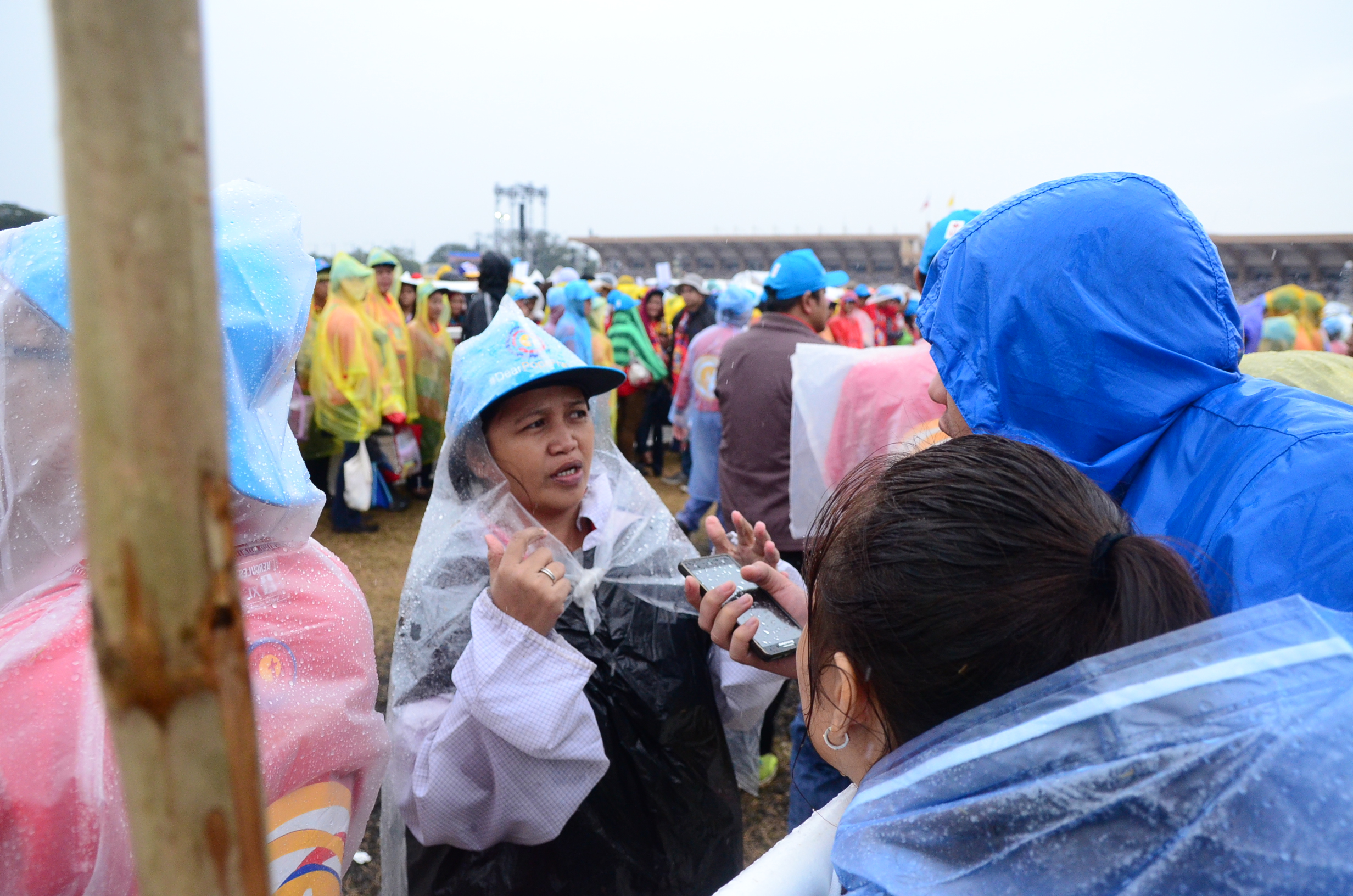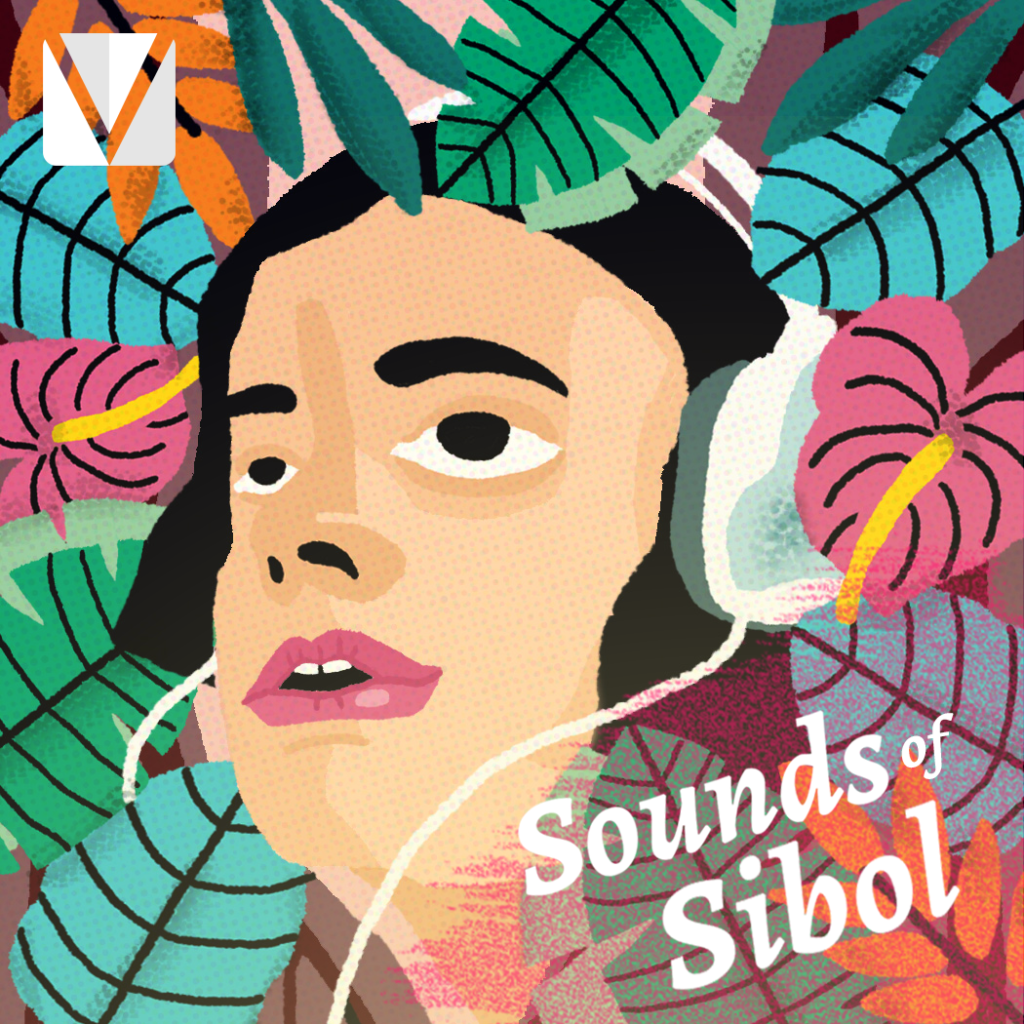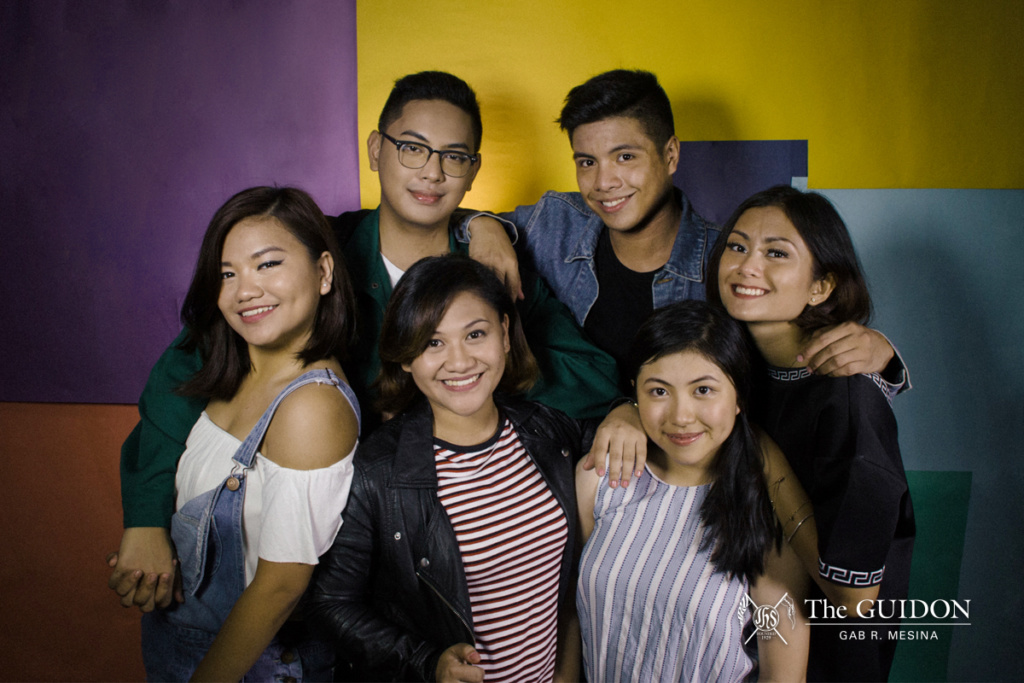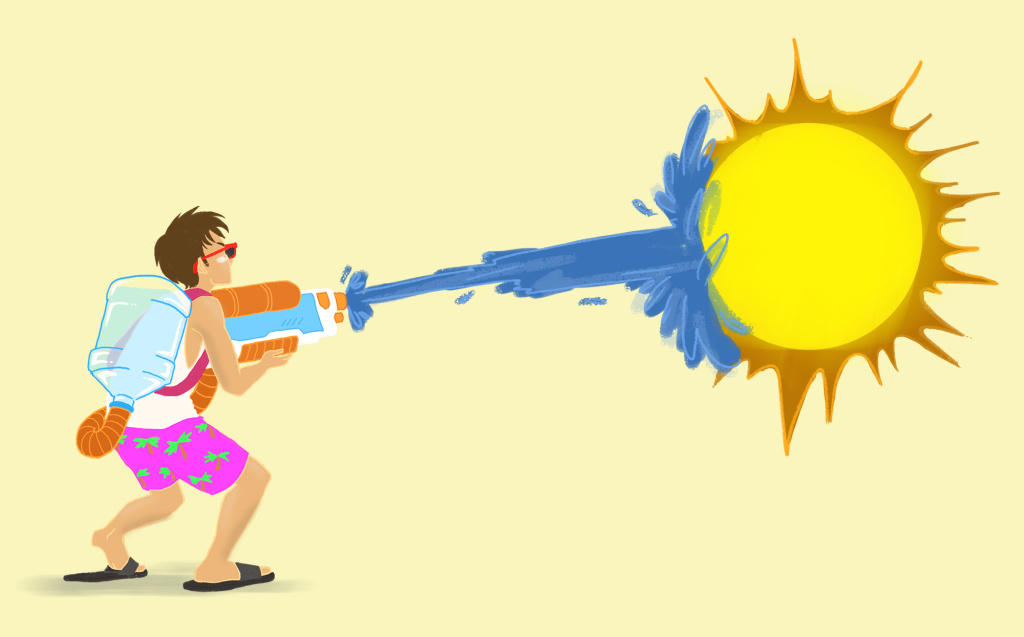Photo by Alfonso G. Abaya
Our journey to join the 700,000 pilgrims let in for the final Mass presided over by the Pontiff began at about 4:30 in the morning, along the windy streets of Taft Avenue. As we stood in wait for our entrance into Rizal Park, there was no space to breathe, screams echoed across the crowd and our wits were severely tested. The crowd of six-million-strong was growing impatient as the numbers grew exponentially. The feeling of restlessness was overtly apparent.
It began with waves. 5:30 AM, the gates of Rizal Park opened to exaggerated gasps of relief resounding across the multitudes. Tides of people flowed in synch, slowly but surely, moving towards their goal. At this time, the waves were calm. We thought our goal was within reach. We were wrong—very wrong. It would be a long day.
Moans of tired and disgruntled attendees filled the air. But the promise of seeing the beloved Pope kept the crowd alive. In the seeming impossibility of our journey, a short gasp of release was found. The incremental movement finally paid off, when we reached the statue of Lapu-Lapu. A number of people had laid their mats, claiming their Papal camping sites. We took this little window of release to regard ourselves and document the scene on camera, but as we realized, the slower pilgrims were not to see the Pope. After a brief shoot with the team’s videographer, we were swept forward again by the turbulent crowd. Our feet wanted to stop, but we couldn’t.
There was a very palpable pulse moving through the mob. Bodies skewing and swerving across the vast mass of people. Fences were climbed and police officers were ignored. Everyone wanted to snatch a glimpse of His Holiness.

Photo by Alfonso G. Abaya
Shifting, the movement suddenly slowed. We were once again at a near standstill. Space was nonexistent at this point and people were doing everything they could to get a few inches ahead. Members of my team often found themselves at the brink of separation. There was growing urgency to keep pace with the mob. It was 8:00 in the morning, six hours until the Pontiff’s arrival. We had to regroup.
At this point, we realized that our initial plans to leave the vicinity to eat lunch were not feasible. We had packed five sandwiches for the team of six to snack on. Now we had to ration it for the entire day. Our water supply was also at a dismal state. The day had barely started and we were starting to get worried we wouldn’t last. Looking around, it seemed our six million companions were more prepared than we were; fully packed containers of rice and food were being lugged around the area.
As the ebbing of our feet pulled us towards Quirino Grandstand (where the Mass would be held), the patience of some seemed to waver. Droves of counter-flow greeted us with a chorus of indignation; people cursing each other with equal amounts of disdain. We were stalled once again.
Amidst the crawling chaos, we found a friend in a photojournalist from Reuters who pointed us towards a few vantage points we’d be able to best cover the rest of the event. We talked about our experiences so far that morning and he told us about a stampede that took place in the area. Although we couldn’t confirm it, we walked past countless collapsed fences and metal rods that could very well have been left in its wake.
Further in, we found the exhausted forces of the Philippine National Police (PNP) seated near the foot of Rizal Monument. In front of the national flag was the entrance of the Quirino Grandstand. It seemed excessively foreboding. We entered with apprehension.

Photo by Alfonso G. Abaya
The journey into the grounds was stressful. It was 9:30AM, about the time Pope Francis would be entering the University of Santo Tomas (UST) for his address to the youth, and the crowds of Luneta were rowdy and agitated. Attendees were screaming at marshals and the PNP was struggling to maintain order. Everyone was angry and confused. For a crowd gathered to see the leader of their faith, the atmosphere was shocking, but understandable. People have been waiting for hours on end for a Mass that wouldn’t start for another five. Six million people and the day was just beginning.
Even though we had arrived at our destination, the residual effects of our journey took a major toll on me. I sat down on the grass, the slow drops of rain falling on my hair. It may have been the exaggerated wait or just our diminishing resources, but I noticed my breathing was pained and my head was heavy. The next thing I remember was being pulled to the first aid booth. After a quick rundown of my vitals, they diagnosed me with low blood sugar. Luckily, our rationing efforts afforded me some candy and water. I was back on my feet shortly after.
10:30 AM, the chosen few had settled into their own quadrants, the entrance to Quirino Grandstand now blocked. We, the 700, 000, were to get glimpses of the Pope—the rest merely echoes. The mood among the people was somber. The anger and frustration had swept away, replaced by quiet resignation and exhaustion. As the rain plowed against our backs, the winds grew stronger. Four hours till his arrival.
There was one person, though, whose emotions were not dampened by the ongoing storm—the emcee. His constant energy paired with an almost showtime-esque personality made some of the crowd spirit rise, and some just doubt why they were there. His antics were extreme, like forcing us to dance to the Sinulog (complete with off-beat choreography) and making us practice a wave to greet the Pope. I was too exhausted to really appreciate the effort, but for those around me, the mood seemed a little lighter.
The moment was fast approaching and the crowds were now exuberant. Gone were the trudging hours, the aching feet and the cold. The rain was pouring, but there was only the excitement and anticipation of finally seeing him.
I had poised myself, ready for his arrival. The crowds were pushing, but no one took notice. Eyes fixed on the giant screen flashing the white car that just pulled up on Roxas Boulevard. He was here.

Photo by Alfonso G. Abaya
But that moment when all the fatigue was to be washed away with a glimpse at his smiling face, was not to be. I was just disappointed. The car did not pass our quadrant, he was nearing our section, but the car turned the other way. The seeming excitement of the people around us disintegrated into a glum demeanor. The cold came back, the aching feet came back, the sleeplessness came back.
The weariness of my body could not hold. By the time he was reading the gospel, we had chosen to leave the scene. We headed towards the Red Cross station, located at the food of Manila hotel, a short distance from where we were covering. Where I found out that my body temperature had dropped to 34 degrees. Our team sat in silence as the medical team pulled us into blankets.
It took time to shake away the disappointment. I could not blame him. I was just aching to feel the refreshing bloom of his presence: That unmarred happiness and humility that the world adored. I saw him briefly, but that was it.
For the more than five million outside Quirino Grandstand that didn’t get to see him at all, I suppose they felt the same or worse. But the echoes of their chanting sounded grateful, if not for the experience, for the Pope himself. His is a message of humility, mercy and compassion. For a nation so bereft of all three, it’s a powerful thing to hear. They may not have seen him, but his presence was felt.
Of course, mine is just a personal experience. The Papal visit was a historic event, and will be remembered by many in many different ways. Definitely, it was something I would never forget. And I think that’s a good thing. I guess.






